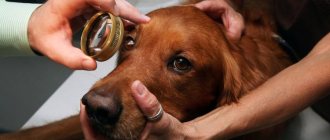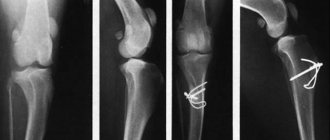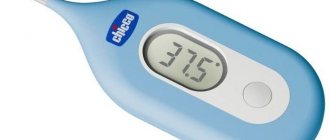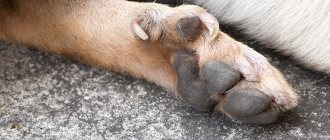The soft tissues of the paws of four-legged pets experience significant stress and exposure to an aggressive environment. Constant contact with asphalt, sand, snow crust, gravel leads to roughening of the skin. Chemical reagents used to treat sidewalks in large cities also provoke the formation of cracks. The damage causes discomfort to the pet and can become inflamed.
Treatment involves independent actions by the owner and the provision of qualified assistance in case of a serious problem.
Causes of cracks in paws, incl. in winter
Veterinary experts believe that the reasons for the appearance of cracks in the crumbs of the paws are complex:
- First of all, the delicate tissue is affected by negative external factors - hot asphalt pavement of roads and sidewalks, hard ice and snow, the crystals of which have a sharp surface. Aggressive chemicals included in de-icing reagents lead to damage to delicate skin. The owner often encounters this reason when walking a pet in big cities.
- Detergents that irritate the skin can also lead to problems.
- Exposure to cold. In winter, there are more and more cases of owners complaining about the formation of cracks on the paw pads of their four-legged friends. This is due to the fact that in cold weather the delicate skin in contact with icy surfaces cracks. Living in northern regions with a harsh climate often has an adverse effect on the condition of the skin of the extremities of pets.
- The dog is overweight. The paw pads function as natural shock absorbers, dampening vibrations and reducing the load on the spine. Because of this, obese pets are often susceptible to developing cracks in the pads.
- Excessive physical activity on hard surfaces. The reason is most typical for working breeds of dogs, which, due to their purpose, have to move for a long time, run, and do exercises on hard asphalt surfaces.
- Errors in diet and feeding regimen. A deficiency of zinc, selenium, vitamin A and E in foods leads to dry skin, including paw pads. Violation of the drinking regime and dehydration also provoke the development of the problem.
Representatives of decorative and miniature breeds are most prone to cracking of the crumbs of their limbs. Such animals have more delicate skin than their larger counterparts, which leads to the development of orthopedic problems.
We recommend reading about gangrene in dogs. From the article you will learn about the causes of gangrene, types of gangrene, surgical treatment, and prevention.
And here is more information about pelvic fractures in dogs.
Cracks on the paws of dogs: causes and first aid
Walking on hard surfaces also has a significant impact on paw health. Choose parks where walking is allowed for outdoor games. Avoid paved areas and sports fields.
6. Cold climate. We all know that frost dries out the skin greatly. The delicate coating of the pads is no exception. During winter walks, be especially careful with your pet's paws, avoid icy roads, and walk your dog in the snow. Moreover, roads in modern cities are covered with special chemicals, which also have a bad effect on the health of the limbs.
How to coat cracks in a dog's pads
Having noticed that a pet has cracks on its paw pads, the owner must first of all protect the pet from walking on hard surfaces. The dog's movement on asphalt, sidewalks, and highways should be limited. Walks should be shortened in time and an area with a soft structure should be chosen for the promenade - short grass, lawns, parks with permitted walking.
The animal should not be allowed to lick the sore spot. A rough tongue and the presence of bacteria, viruses, and fungi on it often lead to the progression of damage and the development of an inflammatory reaction due to the entry of pathogenic agents into microtraumas.
Having discovered cracking of the delicate skin of a dog's paws, the owner should conduct a thorough examination of the affected area. If foreign objects are found in the tissues (sawdust, small pebbles, plant seeds, etc.), care must be taken to remove them.
In case of bleeding, microtraumas should be treated with antiseptic solutions. For this purpose, you should use a solution of Chlorhexidine, Miramistin, Furacilin, potassium permanganate. When processing, you should use a gauze pad or swab and avoid using cotton pads.
You cannot use such aggressive preparations as an alcohol solution of iodine or brilliant green to treat wounds. These products dry out the skin and can worsen the problem.
Cosmetic Vaseline, any softening cream that does not contain a large number of fragrances, for example, “Children’s”, “Vaseline”, “Glycerin”, etc., helps to soften rough and cracked paw skin. At the veterinary pharmacy, you can purchase “Burenka” or “Nochka” ointment for your four-legged pet, which have an excellent softening effect.
The “Rescuer” cream is effective against dry skin and the prevention of microcracks. Creams and ointments based on medicinal herbs - calendula, chamomile, and also with beeswax have a calming and softening effect.
If the cracks are quite deep, a good result is obtained by using 1% Alpizarin ointment, Levomikolev. In some cases, Zinc and Ichthyol ointment can help with the problem.
Veterinary experts recommend not to overuse zinc-based ointments, since it has not only an anti-inflammatory, but also a drying effect, and this is undesirable in this problem. In pet stores and veterinary pharmacies you can purchase a special high-polymer iodine-based antiseptic, Monclavit, which is perfect for treating paw pads, wounds, cuts, and burns.
The medicinal composition in the form of an ointment or cream is applied in a thin layer to damaged skin pre-treated with an antiseptic and fixed with a gauze bandage. To prevent the animal from tearing off the bandage, you can secure it with a baby sock.
Crack on a dog's paw
Toxic chemicals can enter your dog's body when he licks his paws. After walking outdoors, rinse your dog's paws in warm water to remove salt and chemicals. You can lubricate the paws with Vaseline to protect the paw pads from salt before each walk, or purchase shoes for your pet.
Practical Prevention: To reduce the risk of injury, keep your home and yard clean and remove any sharp objects from the floor. Be vigilant while walking, avoid dangerous paths where you will encounter glass shards and other debris. And remember these simple tips if you yourself would not like to walk barefoot on glass and garbage, and you do not want this for your dog!
Treatment of wounded paws if the dog is limping
If the animal, in addition to visible cracking of the paw crumb, also has lameness, self-medication is unacceptable. Indications for contacting the clinic are also swelling, redness, pain on palpation, redness of the pads, bleeding from the paw.
The dog should be shown to a veterinarian to rule out more serious problems - penetration of a foreign object into the deep layers of the skin, development of erosive dermatitis, purulent inflammation of soft tissues.
After identifying the problem, the veterinarian will prescribe treatment. Severe injuries to the soft tissues of the paws require surgical cleaning of the wounds from foreign objects, dirt, and dried blood. Antiseptic solutions are used to treat paw crumbs. In case of deep damage, the wound is additionally sprinkled with streptocide and sutured.
Anti-inflammatory ointments - Tetracycline, Levomycetin, Streptomycin - will help soften and relieve inflammation. If the wound is complicated by a purulent infection, Ichthyol ointment and Vishnevsky liniment are applied topically to the animal. In some cases, a veterinarian may prescribe a course of antibacterial therapy to prevent the spread of purulent inflammation to healthy tissue.
Multivitamin and mineral supplements in food help improve the condition of rough skin, reduce inflammation and accelerate tissue regeneration. In order to eliminate the deficiency of zinc and selenium in the diet, the animal is prescribed their preparations. The dose of microelements will be determined by a veterinarian. Complex vitamin formulations or adding pharmaceutical preparations to food in the dose recommended by the attending physician will help eliminate the deficiency of vitamins A and E.
A good therapeutic effect is obtained by enriching the dog’s diet with bone and meat meal, adding Tetravit and fish oil, Biotin.
To learn how to apply wax to your dog's paws, watch this video:
Preventing problems
Advice and recommendations from experienced dog breeders and veterinary specialists will help prevent the occurrence of a problem that limits the free and painless movement of your pet:
- Walking your four-legged friend should be done in a specially designated area, trying to avoid asphalt, concrete surfaces, and hard grass. Periodically, the walking area must be inspected and foreign objects removed from the site to avoid injury to the animals.
- In winter, when deicing agents are widely used, it is necessary to wear special protective shoes on the dog’s limbs. Your pet should be taught to wear boots from an early age. It is necessary, first of all, for owners of decorative and miniature breeds to pay attention to this issue.
- Before a winter walk, special wax, for example, “Let’s go for a walk,” will help protect the paw crumbs from cracking. The product will protect delicate tissue from the effects of adverse external factors.
- If the pet flatly refuses to walk in winter in protective shoes, as well as during walking in the summer, then after going outside the paws must be washed with pet shampoo. Then the soft tissue of the pads should be treated with an emollient cream, for example, “Children’s” or Vaseline.
- When washing indoor floors, do not use aggressive detergents, which can irritate the delicate skin of the pads.
- Trim your dog's nails in a timely manner, since when they grow excessively, soft tissue injuries occur more often.
- The diet of a pet predisposed to the problem of cracking of paw crumbs should be enriched with vitamins A and E, and the content of zinc and selenium in it should be monitored in recommended quantities. If necessary, add vitamin and mineral complexes to the food recommended by a veterinarian.
We recommend reading about a broken paw in a dog. From the article you will learn about the causes and types of fractures, symptoms of fractures of the front and hind legs, first aid for a pet, diagnosis and treatment.
Read more about rib fractures in dogs here.
Cracks in the paws of dogs occur under the influence of a whole complex of factors - an unfavorable external environment, predisposition and, as a result, a deficiency of vitamins and minerals in the diet. The cracked skin should be treated with an antiseptic and then lubricated with a softening anti-inflammatory cream. If lameness is detected in a pet, the owner should not self-medicate, but seek qualified help.
Why do dogs get cracked paws?
We have already talked about some of the reasons, but one should not think that these are all existing predisposing factors. Many dog owners prefer to play with their pets by throwing them a ball or a stick. Unfortunately, hard-surfaced areas are often chosen for this purpose.
When a dog, accelerating in a rapid rush, tries to stop abruptly, it skids. The paw pads are severely injured.
The same applies to morning jogging in the company of your pet.
Alas, there are very few forested areas in our cities, and most often dogs run along the same paved roads. The worst thing is when owners decide to “involve” domestic dogs in sports, spending most of their lives in “greenhouse” conditions. Their paws become cracked especially quickly after jogging.
The worst situation is for dogs living in regions with simply cold or sharply continental climates.
Winters are especially hard for modern dogs, who have to walk on roads covered with a frozen crust consisting of ice, snow and chemical reagents.
Snow and ice crystals hurt the paws painfully
, chemicals penetrate into the wounds, the skin on the pads begins to dry out and quickly crack. It’s also difficult for dogs whose owners take their pets on a hiking trip in the mountains. Mountain boots are not provided for dogs.
Most often, cracks occur due to a combination of three factors:
climate, hard road surfaces and lack of even basic care on the part of the breeder. If these reasons are eliminated, the paws can quickly become overgrown, but this does not always happen.
Useful video
To learn how to protect your dog’s paws from reagents in winter, watch this video:
Similar articles
- Gangrene in a dog: reasons why wet appeared...
The main reasons why a dog is losing weight. How to treat a broken paw in a cat. ... All Obstetrics in dogs Internal diseases in dogs Infections and parasites Care and education Surgical diseases and injuries. Read more - A dog after a fracture: how is recovery going...
The main reasons why a dog loses weight. How to treat a broken paw in a cat. Inflammation of bones and periosteal tissues or osteomyelitis in cats: what... Read more
- Pelvic fracture in a dog: symptoms, consequences, chances...
Conservative. In case of cracks or damage to the symphysis pubis, the veterinary surgeon most often resorts to applying... Fracture of a paw in a dog: how to determine the anterior... Fracture of the spine in a dog: symptoms, treatment... Read more
- A broken paw in a dog: how to determine the front...
Dogs often receive fractures of their hind and front legs when they are hit by vehicles, bicycles, or moving parts of machines and equipment. .serp-item__passage{color:#888}… Crack or incomplete linear fracture. Pathology has the mildest form... Read more
- Rib fractures in dogs: causes, types, symptoms...
If a rib crack is suspected, the animal is subjected to a computed tomography scan, which can be used to detect the slightest deformation of the bone. ... We recommend reading about a broken paw in a dog. Read more










